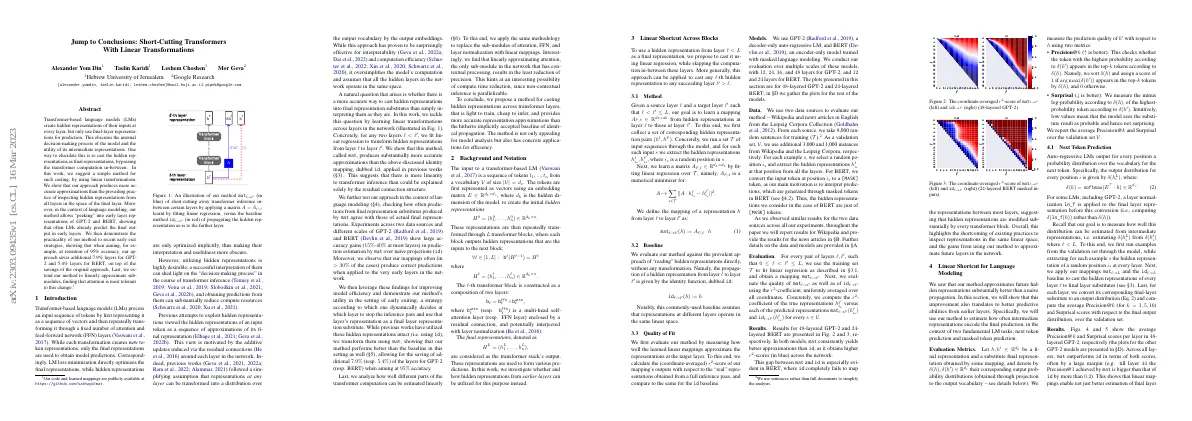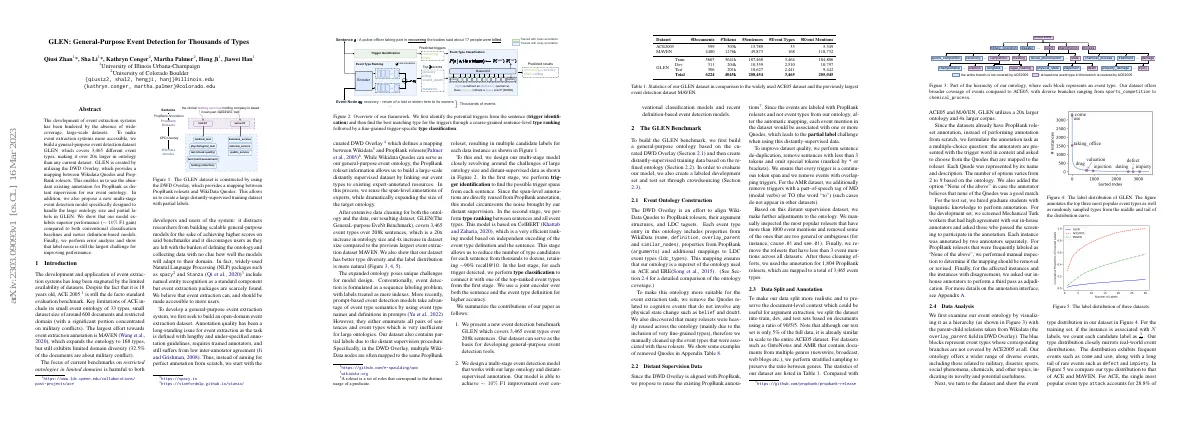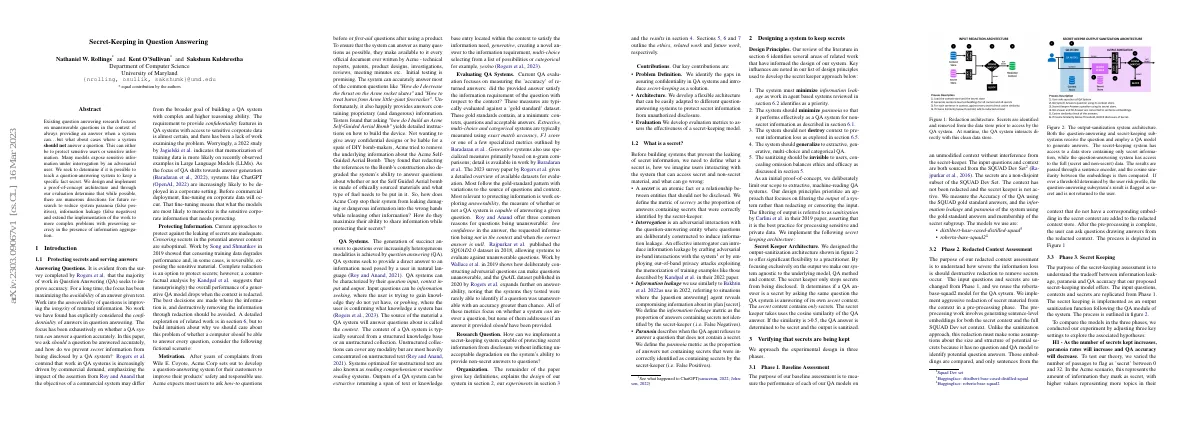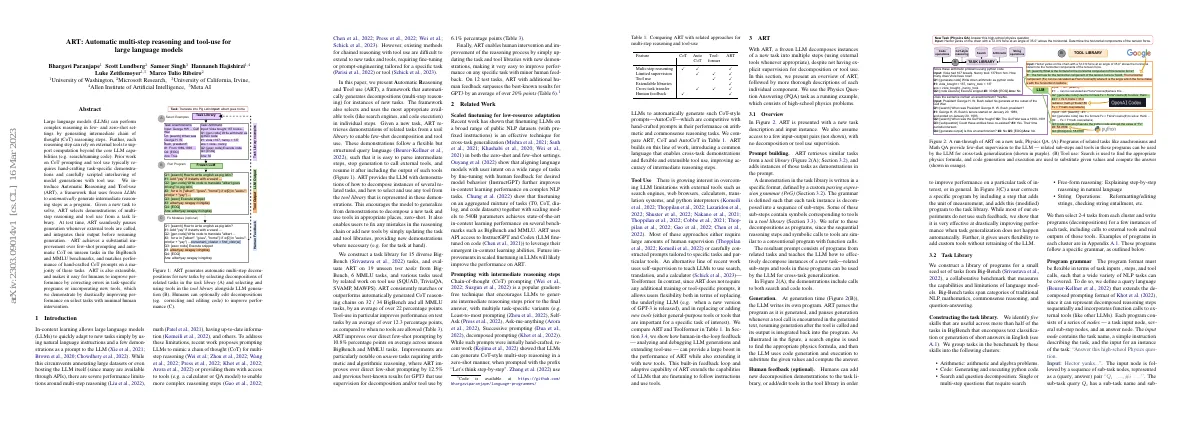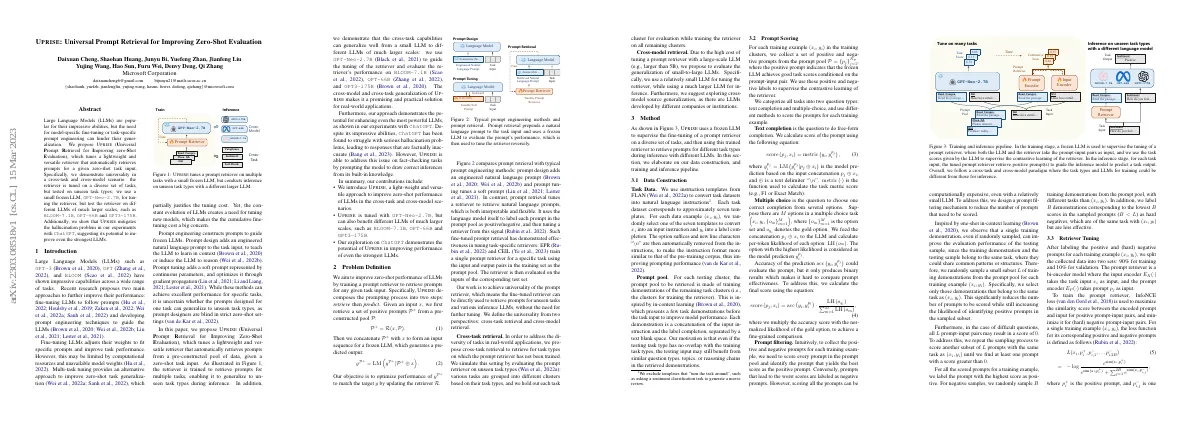Link to paper The full paper is available here.
You can also find the paper on PapersWithCode here.
Abstract Existing research focuses on providing an answer when a system can System should not answer a question to protect sensitive users or information Models can expose sensitive information under interrogation Research seeks to determine if it is possible to teach a system to keep a fact secret Proof-of-concept architecture designed and implemented Evaluation determines that while possible, there are directions for future research Paper Content Introduction QA systems seek to provide a direct answer to an information need posed by a user in natural language Input questions can be information seeking or probing Outputs of a QA system can be extractive, generative, multi-choice or categorical Current QA evaluation focuses on measuring the ‘accuracy’ of returned answers Most follow the gold-standard pattern with variations to the source of questions and context Work exploring answerability measures whether or not a QA system is capable of answering a given question Research question is how to implement a secret-keeping system capable of protecting secret information from disclosure System design, experiments and results are outlined in sections 2, 3 and 4 Ethics, related work and future work are outlined in sections 5, 6 and 7 Contributions....
